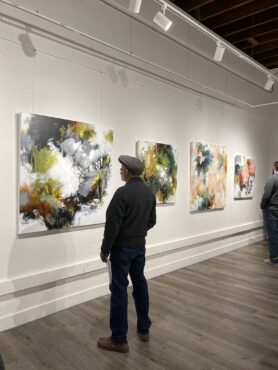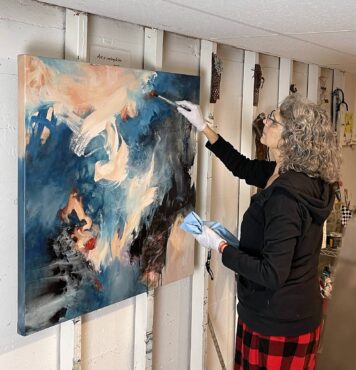 Living in the Pacific Northwest has provided an abundance of inspiration for artist Laurie Barmore. From the fuzzy, green, lush moss of our rain-soaked region to the natural debris on local, rugged beaches, it has all had an impact on her creative process.
Living in the Pacific Northwest has provided an abundance of inspiration for artist Laurie Barmore. From the fuzzy, green, lush moss of our rain-soaked region to the natural debris on local, rugged beaches, it has all had an impact on her creative process.
Born in New York and raised in California, Barmore drew cartoons as a child and learned to embroider and crochet as well. But it was in her adult years, when her youngest child started school, that she took a dive into the world of painting. She started out with art classes at a local community college in California.
“I took probably three years of art classes, just one class per semester,” Barmore said.
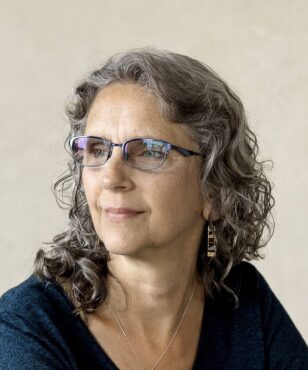
(Photo courtesy Logan Westom)
Embracing another part of herself in her 30s led to a smooth transition for retirement, she said. When she was ready to retire, she already had a passion, a vision and a purpose, and she also knew that she wanted to move out of California. Barmore’s children had moved to live and work in the Pacific Northwest, and it just made sense for her and her husband, Rick, to move to Bremerton, she said. They settled into their new home, with a view of the water, in 2020.
As with any creative endeavor, it took some time for her to find her own style as Barmore started to explore working with acrylic paint in those early years. When she first began to put paint to canvas, she spent a lot of time planning each piece and used a color wheel. She attended some workshops and eventually began to gravitate toward abstraction, but that took some time.
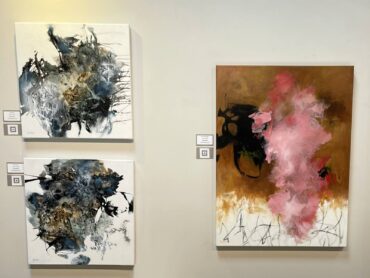 “Over time, it became second nature,” Barmore said. “I’m not so careful in my planning anymore.”
“Over time, it became second nature,” Barmore said. “I’m not so careful in my planning anymore.”
That drive to be exact and paint perfectly was hindering her desire to be more free and expressive, she said. Barmore wanted to find a way to let go and feel more instead of being so cerebral. Attention to detail, exactness and perfection had served her well as a registered nurse, where details, organization, planning and executing exactly as needed are imperative in life-or-death situations. Practicing that way of being for 40 years took some time to let go of when Barmore began her journey into creativity.
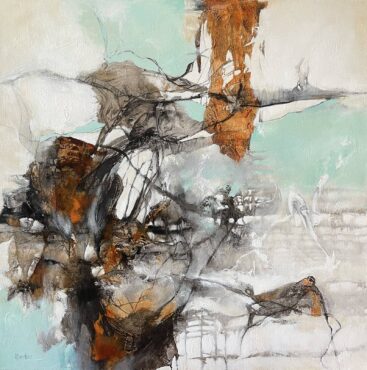
“By nature, I’m detail oriented, and that was a struggle for me early on because my tendency was to paint that way and be very picky, but I wanted to be more expressive in my painting. I started experimenting in abstraction and loved it,” she said. “That’s how I got started, and then early on, I found an art group that I could join and learn from other members.”
But it was Barmore’s ability to zero in on small details that led her to discover limpet rings along the beach. Limpet rings — which are small and thin — are left behind from the conical shell of a mollusk that breaks when tossed in the waves. These leftover parts have influenced her outlook and her art as she strives to capture the concept of looking around the visible and through it simultaneously. She said that a quote by Rumi that she holds dear has driven much of her work: “Everything that you see has its roots in the unseen world.”
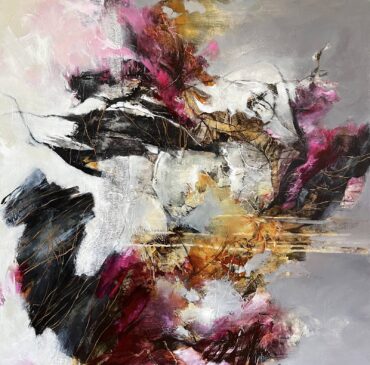
“I’m drawn to express that in my paintings — the emotions, ideas, nature, experiences and things that I read, things that inspire,” Barmore said. “The thing that I really desire to do in my painting is to give a visual expression of things that you can’t see — so it’s emotional feelings. When you hold a limpet ring up, you’re looking around the visible stuff on the outside, but also looking through it simultaneously.”
Fully aware that the viewer may interpret her work in an altogether different way than she felt while creating it, Barmore said that a personal interpretation is not only important for the person enjoying the art, but it’s also part of the joy of abstract expression for her. She works primarily in acrylic, though she also incorporates some mixed media into pieces, including various papers, fibers and asemic writing, which uses symbols and forms that represent script. By using these, she said it gives the viewer another way of bringing their own interpretation to her creations.
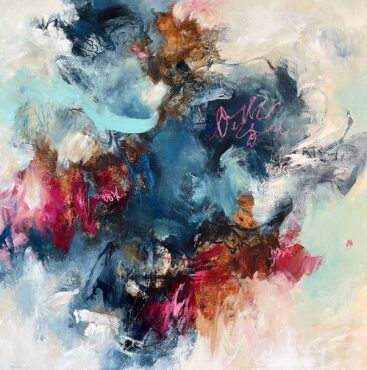
“I’ve used found paper or parts of signs, and I enjoy making calligraphy that is loose and chaotic,” Barmore said. “I paint it on paper, then cut it out and collage that onto the paintings. I use a little bit of oil on top of acrylic at times, but acrylic is the foundation.”
Art gives society a chance to slow down and have an encounter with something that can widen the perspective of the viewer. Art is a slow pursuit, Barmore said, and it benefits everyone.
She believes that anyone has the capacity for art and that human beings are naturally creative. Those who believe themselves unable to create should look at what they do already in their lives, she recommended. This could be cooking, gardening or any type of hand work with materials such as yarn or wood — or anything else outside of an ordinary daily task. Reminiscing on things you loved to do in childhood can lead to a newfound passion in adulthood, she said.
“We create all the time; we just don’t call it creating,” Barmore said. “It kind of charges you up, and I think those are the key things. It’s fun and it feels like you’re playing, and I think we all need something like that in our life, otherwise it’s all business and we go along with the idea that we aren’t creative. I can’t imagine my life without my artmaking at this point.”




